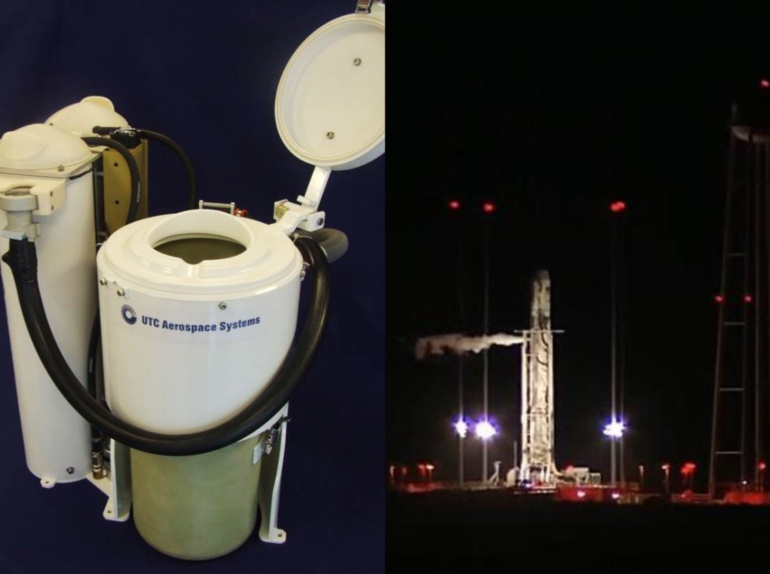For the first time since the 1990s, NASA is launching a toilet into space for its astronauts at the International Space Station. Yep, you heard it right—a toilet. This new toilet cost NASA a whopping $23 million.
Space toilets are rather complicated to create due to the fact that there’s no gravity in space to drag the waste away. When astronauts first started traveling to space in the 1960s, they didn’t have toilets—they were given rubber tubes to pee in, which were not accommodating to women. Fortunately, this isn’t the case anymore.
NASA’s new space toilet model, the Universal Waste Management System (UWMS), is reportedly 65% lighter and 40% smaller than the previous model from the 90s, called the Waste Collection System. It’s also designed to be more comfortable for women as it allows crew members to urinate and defecate at the same time, whereas the old toilet only allowed crew members to either urinate or defecate, but not at the same time.
While the Universal Waste Management System is smaller than the Waste Collection System, its shape allows for a more comfortable seat for the crew members.
To Boldly Go
What's more exciting than a new toilet? A new SPACE toilet.@NASA https://t.co/6sIh97TsNI pic.twitter.com/c1hHQxDtzw— Chris Hadfield (@Cmdr_Hadfield) September 26, 2020
According to NASA’s Instagram page, The Cygnus, the spacecraft carrying the $23 million space toilet plus 8,000 pounds of cargo, was scheduled to lift off from Wallops Flight Facility in Virginia on October 1st at 9:38 PM EDT; however, after a malfunction warning appeared approximately three minutes before liftoff, NASA decided to postpone the launch. We’re not sure of when NASA will make another attempt to launch The Cygnus.
View this post on Instagram🎵 Whoa! Amber is the color of our energy 🎵
A @NorthropGrumman Antares rocket and Cygnus spacecraft are ready for liftoff from @NASAWallops Flight Facility in Virginia. The Cygnus, named the S.S. Kalpana Chawla after the first female astronaut of Indian descent, will deliver nearly 8,000 pounds of cargo and supplies to the International Space Station (@ISS). Launch is targeted at 9:38 p.m. EDT.
Credit: NASA/Patrick Black
#Rocket #FullMoon #Launchpad #October #WallopsIsland #Virginia #NASA


